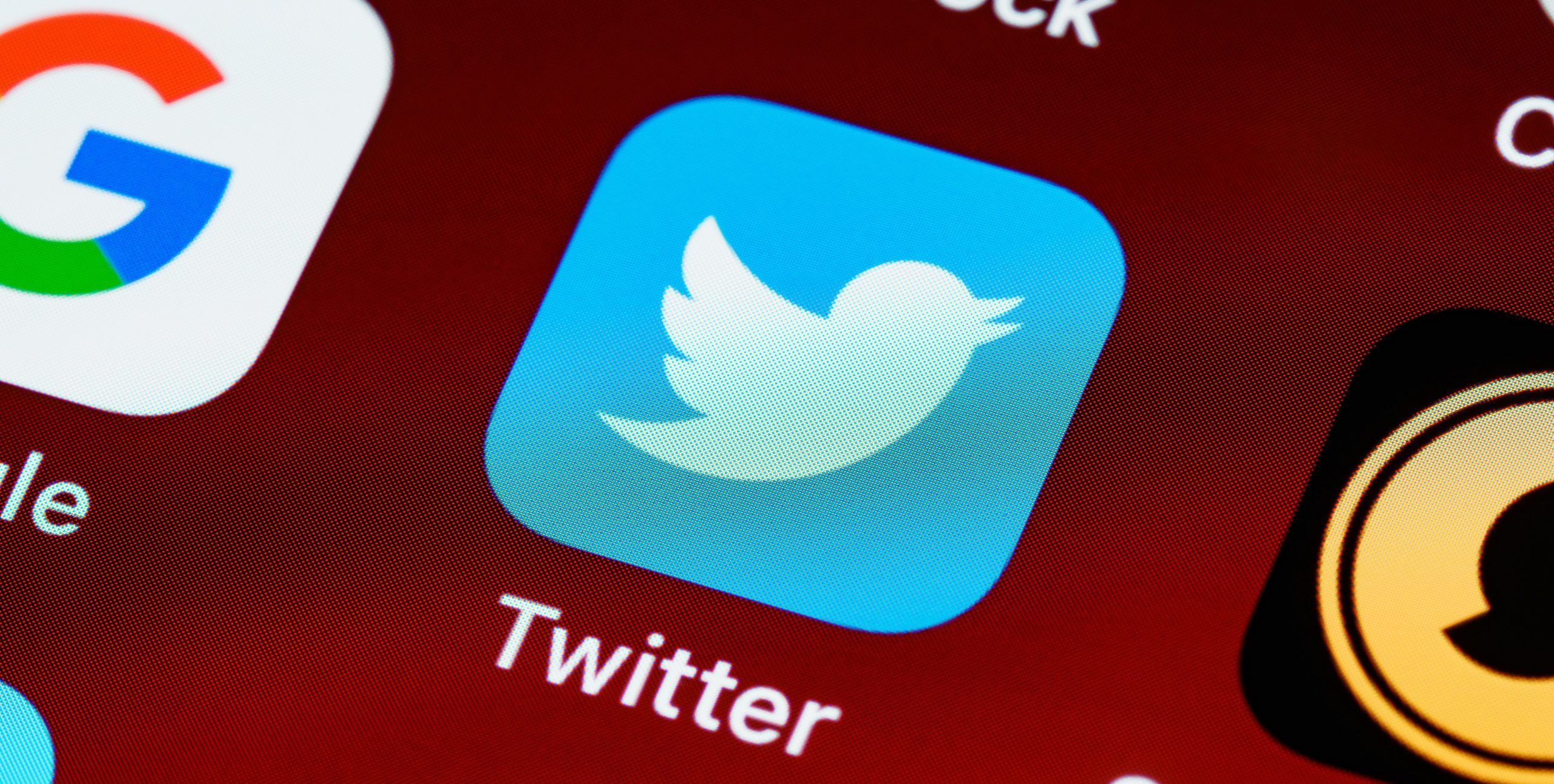 Richard Armitage is a GP and Public Health Specialty Registrar, and Honorary Assistant Professor at the University of Nottingham’s Academic Unit of Population and Lifespan Sciences. He is on Twitter: @drricharmitage
Richard Armitage is a GP and Public Health Specialty Registrar, and Honorary Assistant Professor at the University of Nottingham’s Academic Unit of Population and Lifespan Sciences. He is on Twitter: @drricharmitage
Elon Musk finally closed his $44 billion deal to buy the social media platform Twitter, and in his characteristically playful and mockingly grandiose style, strode into his new company’s headquarters carrying a large kitchen sink (“Entering Twitter HQ – let that sink in!”). Some readers no doubt access BJGP and BJGPLife via Twitter, but not all many be aware what its key challenges are, and what its role is in today’s general practice and the wider online health system.
What is Twitter?
Since its founding by Jack Dorsey and Evan Williams in 2006, the social media platform Twitter has grown to contain around 450 million monthly active users and, in 2021 alone, generated $5 billion revenue, 92% of which came from advertising (the company posted a net loss of $221 million in the same year, however).1 While the total number of people that use the platform regularly is substantially lower than that of other leading platforms (such as Facebook, Instagram and, more recently, TikTok), the nature of Twitter’s discourse is of an entirely different kind. Twitter has undoubtedly become the world’s digital town square, and provides the soapbox upon which contemporary issues and political dialogue are played out in real time. It allows everyday citizens to engage with ‘elites’ – from heads of state and cabinet members to industry leaders and tech billionaires – and therefore deals in content of a significantly different kind to the personal life updates, lifestyle photos, and comedically-staged videos of Facebook, Instagram and TikTok. Indeed, Twitter is considered to be so centrally important to Western political discourse – and a driving accelerant of the Anglosphere’s widening polarisation – that correcting the problems inherent to its business model, profile requirements and algorithmic architecture is precisely the expressed motive behind Elon’s decision to acquire it. As such, even if you don’t have a Twitter account yourself, the platform’s influence on your social, professional and political lives is likely to be substantial and increase over time.
How Twitter is used
Twitter has undoubtedly become the world’s digital town square, and provides the soapbox upon which contemporary issues and political dialogue are played out in real time.
Generally, Twitter accounts are set up for one or a combination of two reasons. These reasons map on to how the platform is used in general practice and other disciplines of healthcare. The first is promotion. On an individual level, self-promotion may extend to the advancement of a professionalised brand (such as ‘GP and Physical activity Champion,’ Dr Zoe Williams), an individual’s portfolio of research and publications (such as Professor Trisha Greenhalgh, Professor of Primary Healthcare at the University of Oxford), or a person’s own organisation, which may be for-profit (such as Dr Rupy Aujla’s ‘The Doctor’s Kitchen’), or not (such as Professor Tony Redmond, Founder of humanitarian medicine charity UK-Med). Beyond the personal level, individuals may affiliate themselves with existing organisations, professional bodies, policy think tanks, research consortia, publications and activist movements, who each have their own Twitter profiles to promote their outputs and activities (such as the BJGP, RCGP, and Wellcome Trust). Both individual and organisational accounts can raise their public profile by posting particular hashtags, which gain exposure and virality by ‘trending’ relevant phrases, and ultimately draw eyeballs to the posting account’s content (for example, #generalpractice will draw users to the RCGP’s profile, amongst other Twitter profiles concerned with general practice activities).
The second reason is that Twitter account allow their owners to vocalise their opinions and to ask questions to the masses. Through the worldwide uptake of this platform as a debating chamber, Twitter has come to be considered as the world’s ‘digital town square.’ In this capacity, users often disassociate themselves from their affiliated institutions by displaying in their bios some variant of “own opinions.” Each Tweet can contain up to 280 characters, and links to other websites can be incorporated into posts, while threads of connecting Tweets can be constructed for longer arguments. Users can find other Tweets concerned with the same theme by searching for relevant hashtags that have been assigned to particular issues (such as #RCGPVF, the hashtag for the RCGP’s event ‘a Vision for the Future of General Practice’), and weigh in by replying directly or by posting stand-alone Tweets.
Problems with Twitter
While the current character limitation and ability to create threads constitute marked improvements from previous iterations of the platform’s functionality (Tweets were previously limited to 140 characters, and threads were historically not possible), the ability for short snippets of text devoid of contextualisation and without the benefit of verbal tone and facial expressions of the issuer to be wildly misinterpreted and regarded as offensive is obviously extreme and regularly encountered. The algorithmic engine that drives engagement on the site – using metrics such as the ‘liking’ and ‘retweeting’ facilities – often promotes inflammatory content and political rhetoric, and prioritises Tweets according to their engagement statistics ahead of chronically ordered content.3 The company’s existing policies regarding free speech and what constitutes that driven by hatred and malice attempt to manage a constellation of competing values that requires scholars of law, ethics and human psychology to make meaningful decision that can be widely agreed upon. These policies – whatever the nature of their content – will inevitably be suffused with political ideology, and the debate rages on as regards which values should be prioritised. Regardless of your opinion on these matter, the platform’s ability to influence the discourse is both enormous and a clear problem. The huge number of bots (accounts controlled by computer code, not human minds), anonymous profiles, and followers of certain accounts (Barack Obama has over 133 million followers, for example), are central to the misuse of the platform and the fractious polarisation it generates.
Is Twitter a good thing for contemporary general practice?
The algorithmic engine that drives engagement on the site – using metrics such as the ‘liking’ and ‘retweeting’ facilities – favours hashtags and text combinations that generate anger and fear, and promotes these into user feeds ahead of chronically ordered content.
Beyond the risk of wasting significant amount of time on the platform, the use of Twitter for promotion in general practice – of individual practitioners or of the organisations they’re affiliated with – seems to be an unalloyed good. Indeed, a strong social media presence is an indispensable feature of any marketing strategy in today’s online world of digital consumption (you may have come across this article through BJGP’s Twitter account, for example). When it comes to debate, clinicians of general practice are generally intelligent individuals with advanced social skills and the ability to argue respectfully. The incentives and dynamics inherent to social media, however, sometimes prove too powerful for the representatives of even our profession to maintain a courteous discourse. This is likely to be exacerbated by the profession’s left-leaning strong majority,2 which may create a substantial chilling effect that causes divergent perspectives to self-censor their opinions to avoid the digital pile-on of the general practice Twitterati (this is likely to be especially the case with regard to controversial topics such as the management of children who present as transgender). The problems intrinsic to the platform’s current architecture that affect Twitter users generally when dealing with sensitive issues are therefore likely to also affect the microcosm of #generalpractice, albeit to lesser extent due to the profession’s personalities. As such, the platform’s ability to bring together practitioners from all patches of the system, and to engage in real-time discussion on topical issues as they emerge – an arrangement until recently only made possible by annual conferences – generates plenty of utility that is strongly net positive.
For me, Elon Musk’s decision to purchase Twitter is a good thing for humanity. While I worry about the possible consequences of such highly concentrated power, his pro-social track record of producing electric vehicles and solar panels outweighs my apprehensions of his techno-utopian ideals (his Mars relocation programme seems worryingly defeatist, while the Neuralink project seems an unadulterated dystopia). If he becomes tyrannical, the free-market will reward competitors who offer viable alternatives. Meanwhile, general practice benefits greatly from the advantages offered by the platform, and will continue to do so as more practitioners create accounts.
References
- M Iqbal. Twitter Revenue and Usage Statistics (2022). Business of Apps 06 September 2022 https://www.businessofapps.com/data/twitter-statistics/ [accessed 01 November 2022]
- KL Mandeville, R Satherley, JA Hall, et al. Political views of doctors in the UK: a cross-sectional study. Journal of Epidemiology & Community Health 2018; 72: 880-887. DOI: 10.1136/jech-2018-210801
- https://edition.cnn.com/2019/03/22/tech/twitter-algorithm-political-rhetoric/index.html [accessed 01 November 2022]
Featured Photo by Brett Jordan on Unsplash







Hey I’m William The author provided insightful examples of how Twitter can be used to share knowledge, engage with patients and the community, and promote healthcare initiatives. The article also highlights the importance of using social media in a responsible and professional manner, which is critical in the healthcare industry.